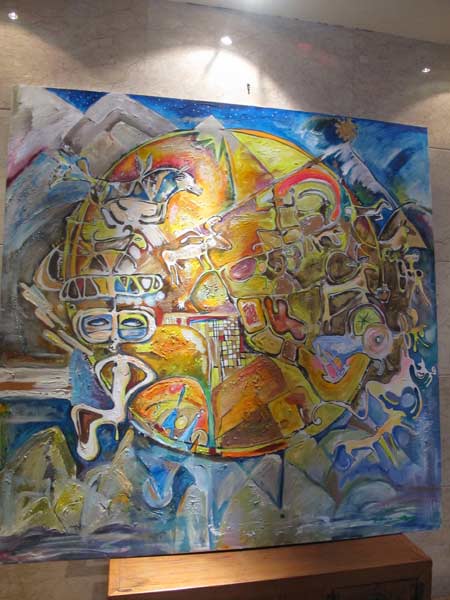
 |
| A painting of Zayat is displayed at the Grassland Culture Communication Center in Hohhot, the Inner Mongolia autonomous region. (China Daily/Wang Kaihao) |
"His heart is like a lens," says Zhao Shulin, a Beijing-based fine arts critic who has high praise for Zayat's work. "The world in his eyes is more harmonious and natural. His works have got rid of artificial vestiges and gone beyond space and time.
"Mongol culture greatly contributed to Western civilization during its expansion in the 13th century, and on the other hand it also absorbed Han people's philosophies during the Yuan Dynasty," he says. "The arts are deeply rooted in that cultural background and reveal many common human values and will be easily accepted by both the West and the East."
Zhang adds that only the artists who were born on the grassland are qualified to visually decipher the ancient code.
"It is not because others are not skillful enough, but some subtle emotions can only be felt by grassland inhabitants."
Traditional Chinese paintings portraying Inner Mongolia's magnificent grasslands have long been prevalent, but Zhang wants multiple art disciplines to depict the area.
"This is not a place to begin a school of painting and demand our newcomers follow certain disciplines. I don't want it academic. Independent artists have more freedom to express their thoughts and not be restricted by a certain style," Zhang says.


















 Snowfall hits Taiyuan, N China
Snowfall hits Taiyuan, N China


![]()
